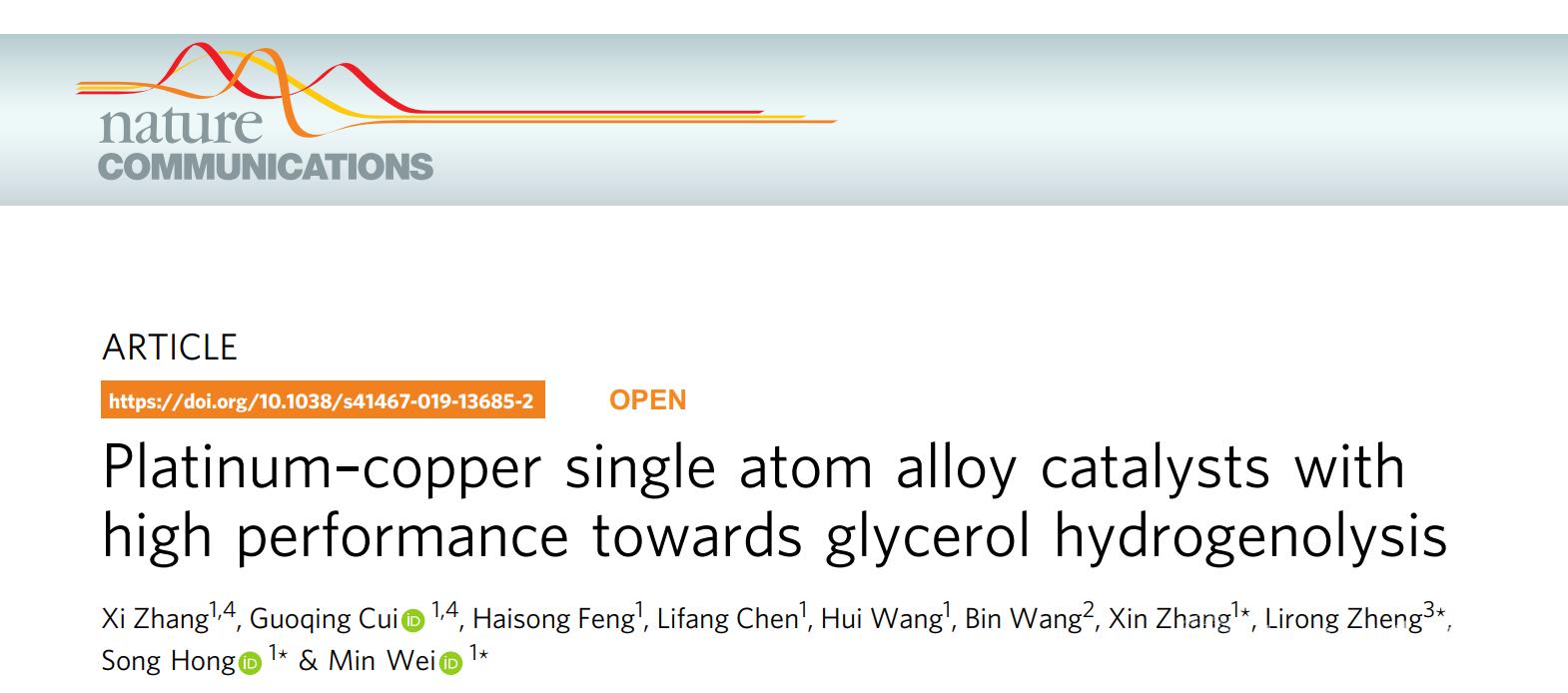Research work from Professor Wei's group has been published in Nature Communications

Recently, the research work from Professor Min Wei's group Platinum–copper single atom alloy catalysts with high performance towards glycerol hydrogenolysis was published in Nature Communications (2019, 10, 5812). They designed and prepared a PtCu single atom alloy (PtCu-SAA) catalyst via a “topotactic transformation process-galvanic replacement reaction” procedure based on CuMgAl-hydrotalcite precursor. This PtCu–SAA features with single Pt atom dispersed on Cu nanoclusters, in which a full utilization of precious metal Pt can be achieved.The resulting heterogeneous PtCu–SAA catalyst highlights the advantage of synergistic catalysis between Cu and Pt, which gives an extremely high catalytic performance with the largest TOF value (2.6×103 h-1) towards glycerol hydrogenolysis to 1,2-PDO, in comparison with previously reported catalysts.A combination study including in situ characterization techniques and theoretical calculations verify that Pt-Cu interface sites of PtCu–SAA serve as intrinsic active sites while the interfacial synergistic catalysis changes the reaction pathway with a largely decreased activation energy. The method developed in this work can be extended to the preparation of other high-performance single atom alloy-based catalysts (especially noble metal-involved), with a wide range of heterogeneous catalysis applications.

Left: Synthesis and characterization of PtCu–SAA from LDHs precursor; Middle: Identification of catalytic active center; Right: Reaction pathway based on in situ experimental studies and DFT calculations.
Xi Zhang and Guoqing Cui are the co-first authors of this work; the corresponding authors are Professor Min Wei, Associate Professor Xin Zhang, Associate Professor Song Hong from BUCT, and Associate Professor Lirong Zheng from Institute of High Energy Physics. Beijing University of Chemical Technology is the first affiliation and Institute of High Energy Physics (Chinese Academy of Sciences) is the cooperation organization. This work was supported by the National Natural Science Foundation of China (NSFC), the National Key Research and Development Program, and the Fundamental Research Funds for the Central Universities.
